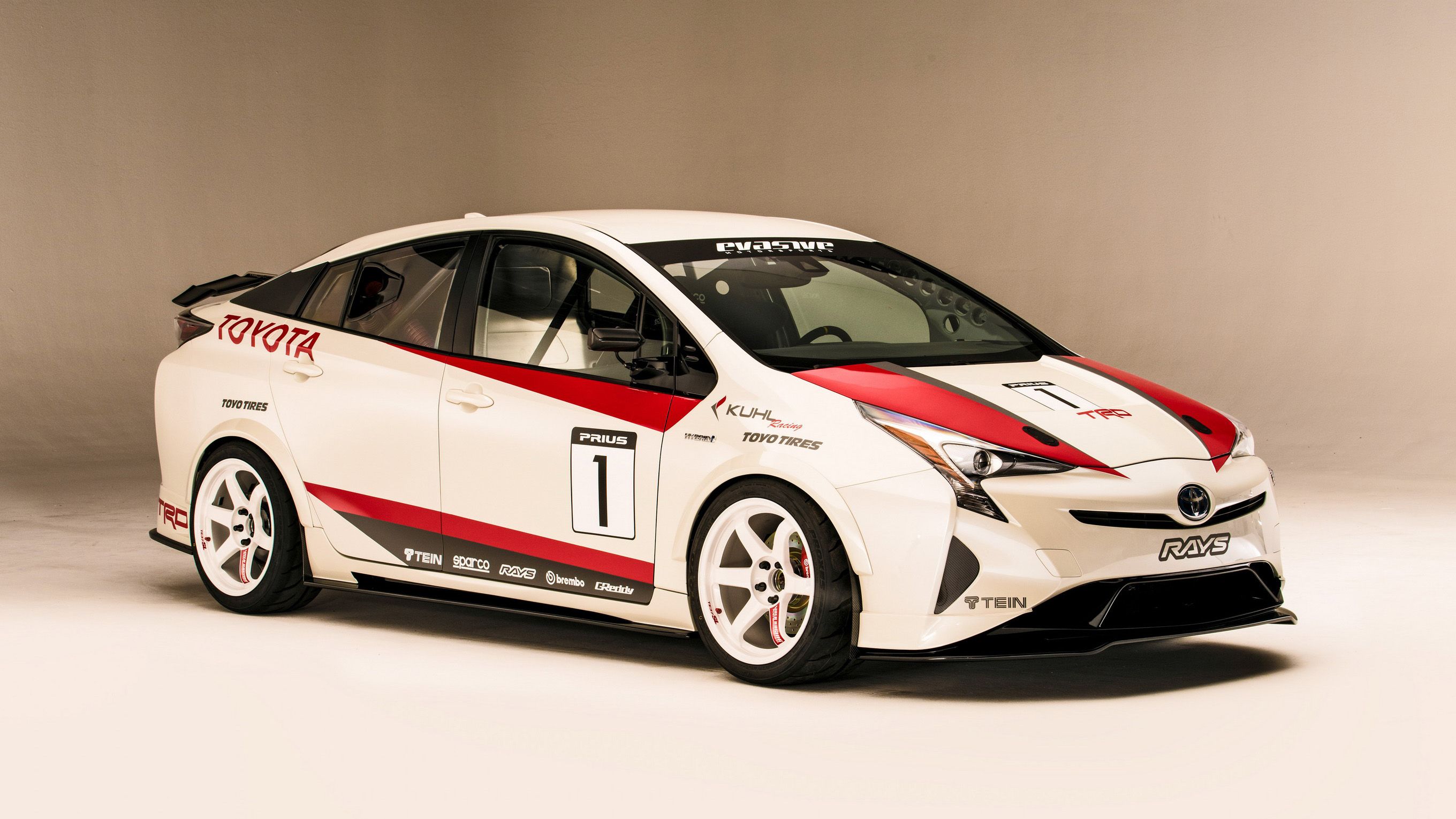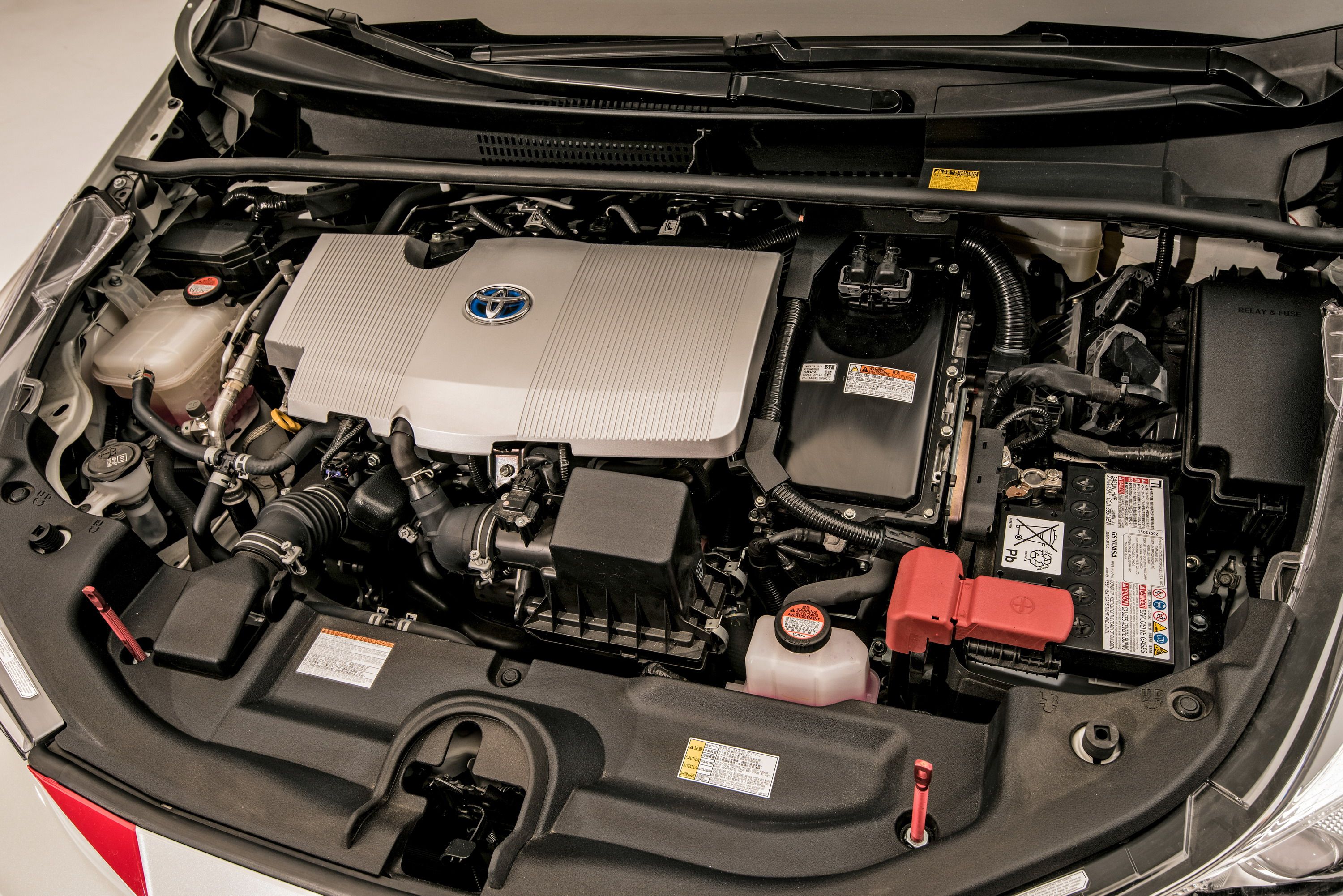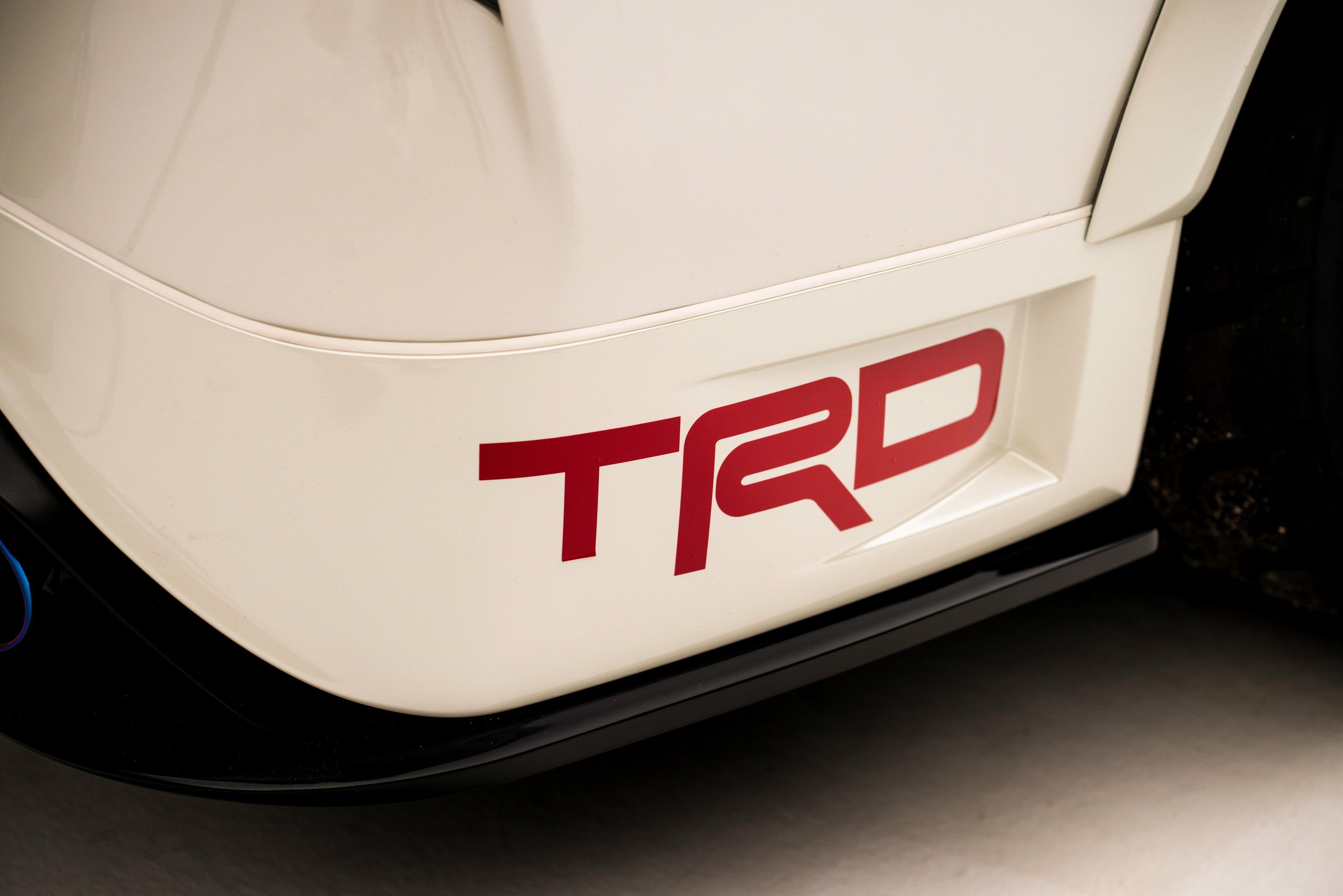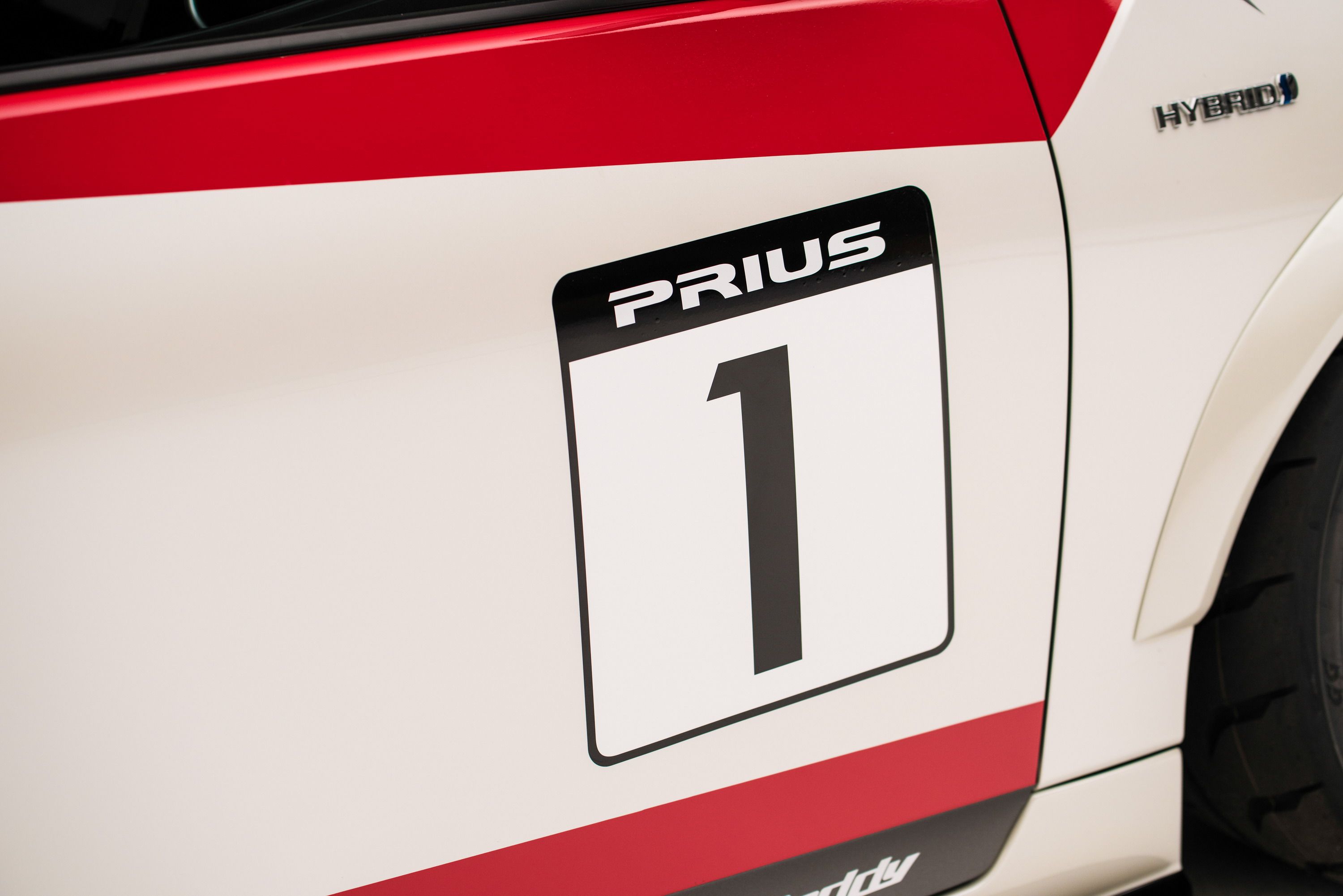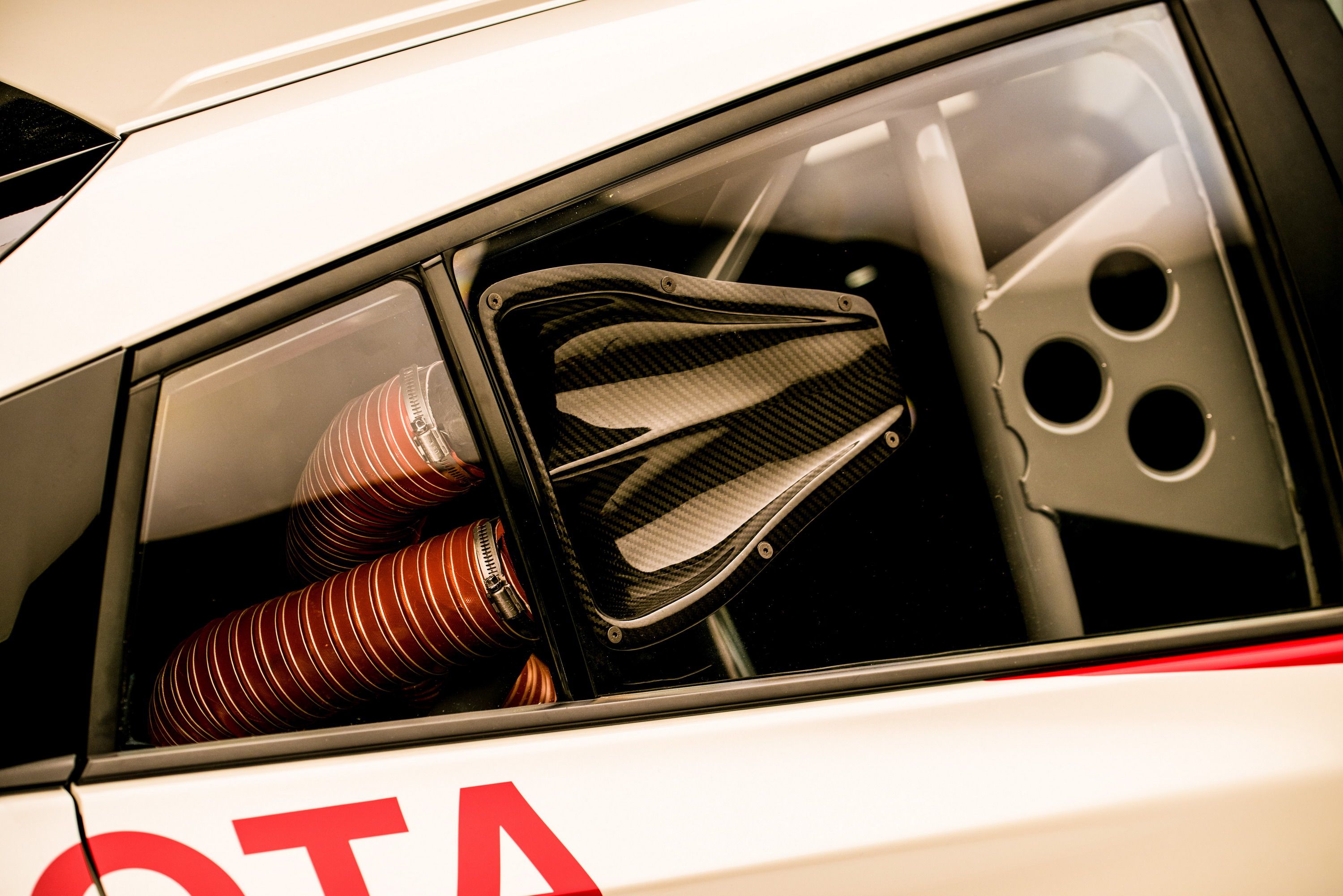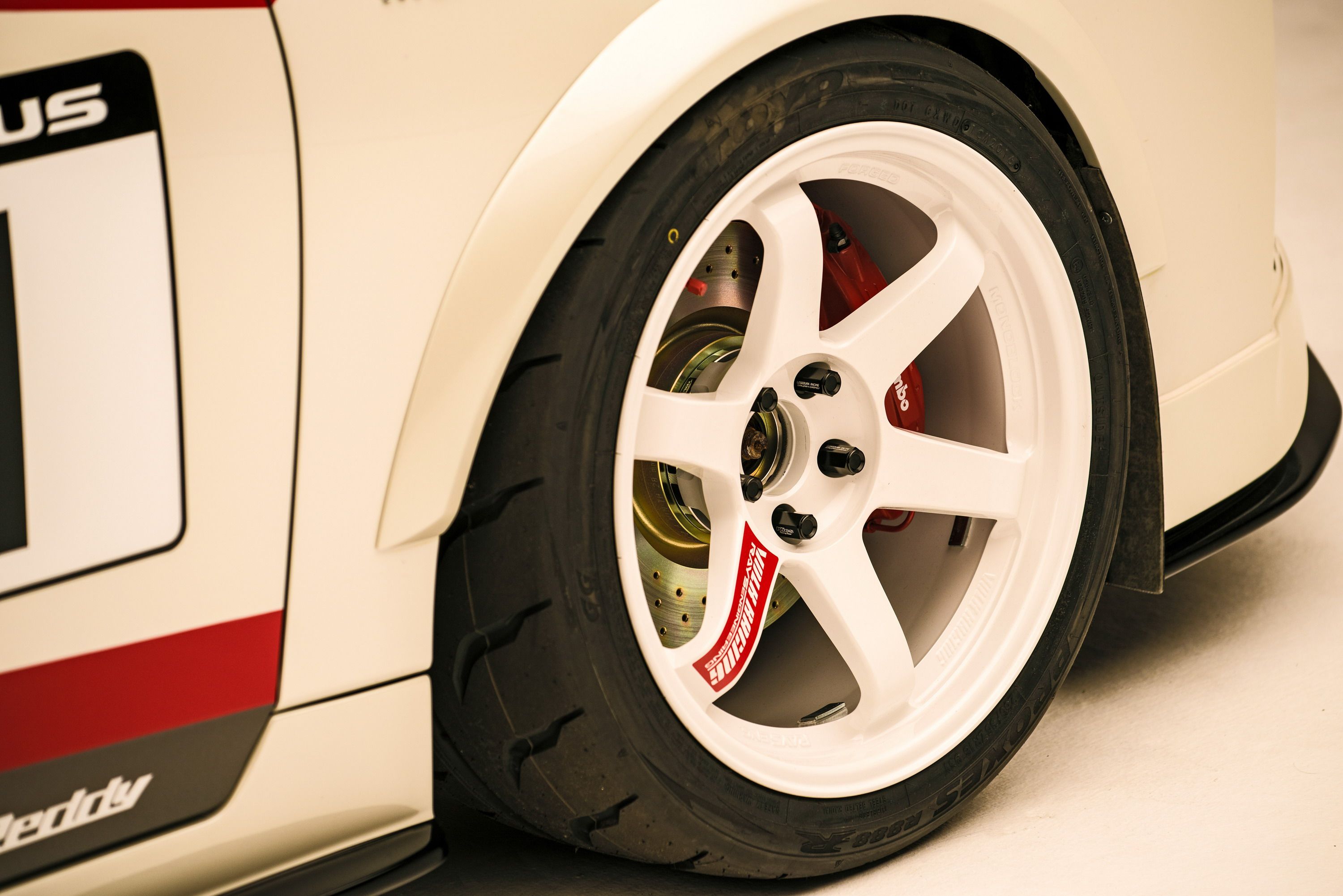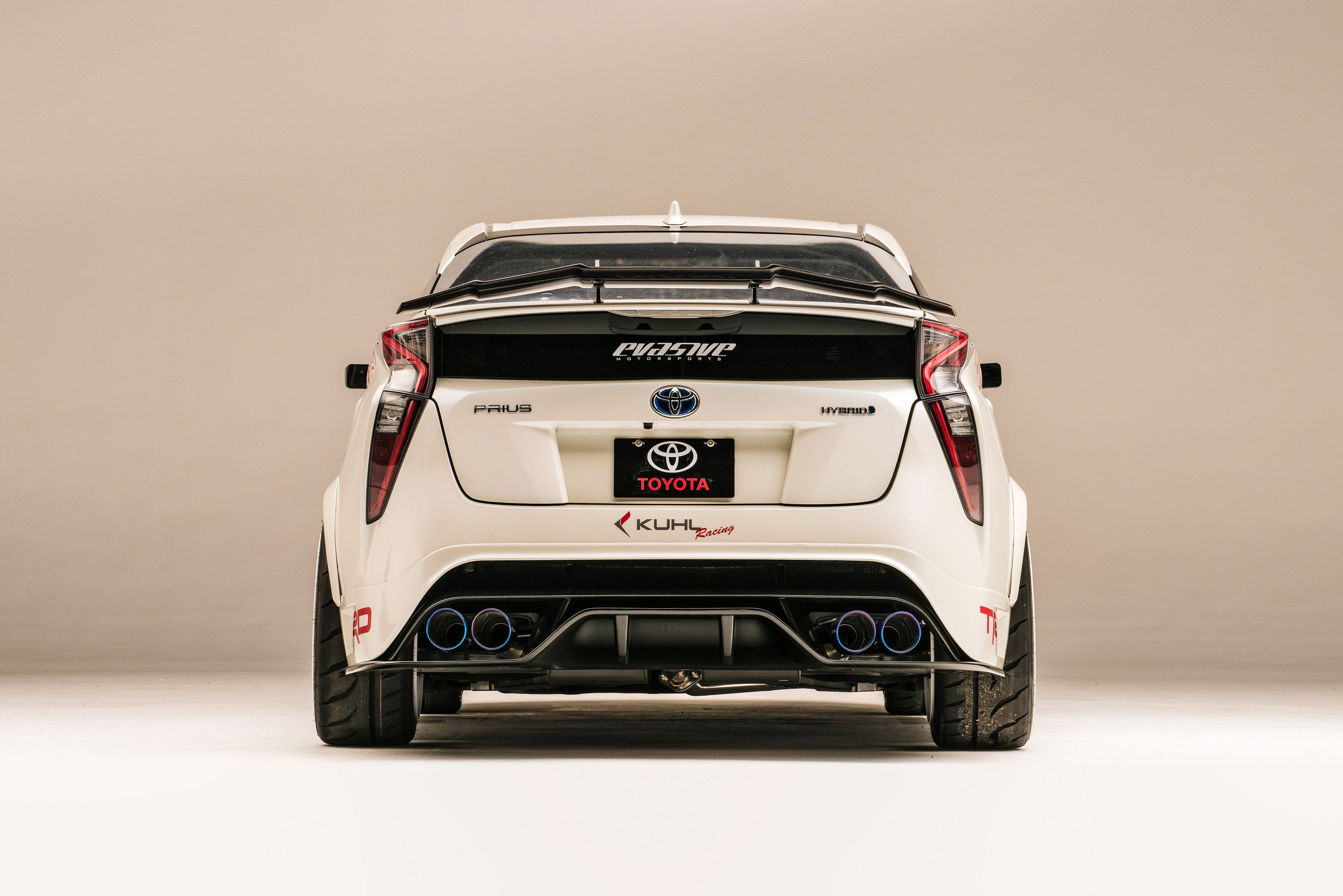If you ever head out to Vegas for the annual SEMA show, be prepared to see some pretty weird things. In an attempt to outdo one another and turn heads on the show floor, the world’s foremost tuners and speed shops have been known to unleash the creative juices in a frothing torrent of strange, twisted metal. Some of it is beautiful, while some of it is bizarre. To U.S. audiences, this Prius race car probably falls into that latter category. But the thing is, if you go to Japan, you’ll find that the Prius is much more than the standard-bearer of efficient commuting. In fact, there’s even a wide-body, V-8 hybrid-powered Prius GT300 race car running in the island nation’s SuperGT race series, which is exactly the inspiration for the speed-ready Toyota concept you see before you. It’s called the Prius G, and the interior is gutted and the body is aero-enhanced, while the corners are equipped with enough stick to hit 1 G on the skid pad.
That impressive lateral acceleration figure provides the name for this unexpected SEMA concept car. But of course, a track-bound Prius isn’t an easy thing to pull off, especially when you consider the dearth of performance parts available on the aftermarket. But when Toyota brought the project to Gordon Ting of Beyond Marketing, he was undeterred.
“It’s an experiment in some ways,” Ting said. “The Prius G is unexpected, and that thrills me. I like building out the reputation of the car and showing that it can do a lot more with minimal changes.”
So what exactly does this reworked 2016 Prius bring to the table? Read on to learn all the details.
Continue reading to learn more about the Prius G.
2016 Toyota Prius G
- Make: Array
- Model: 2016 Toyota Prius G
- [do not use] Vehicle Model: Array
Exterior
It’s clear from the outset that this is not a normal Prius we’re dealing with. The whole exterior was reworked, offering a racing-inspired exterior draped in a new livery, plus eye-catching aero that emphasizes downforce, rather than efficiency and low drag.
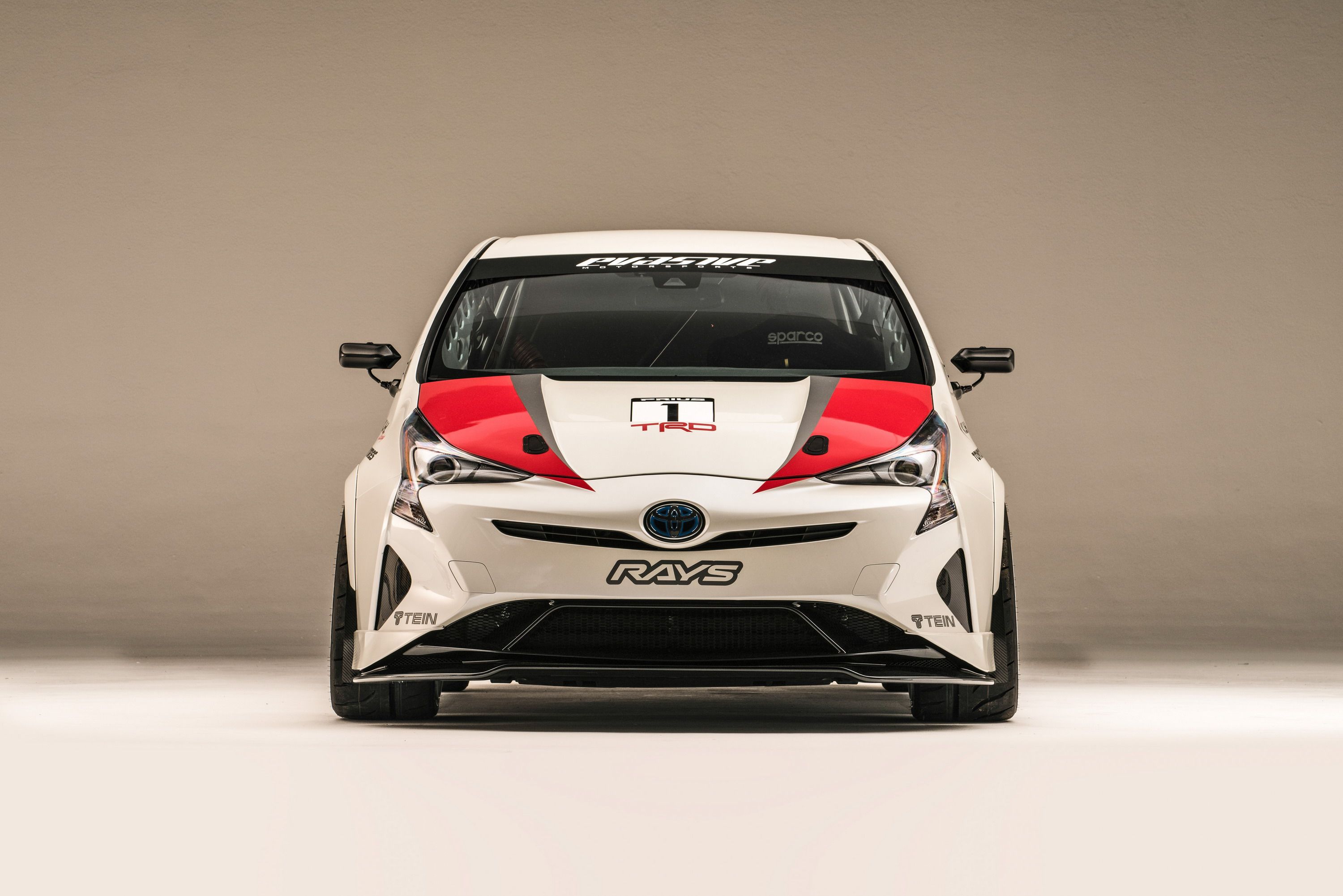
|
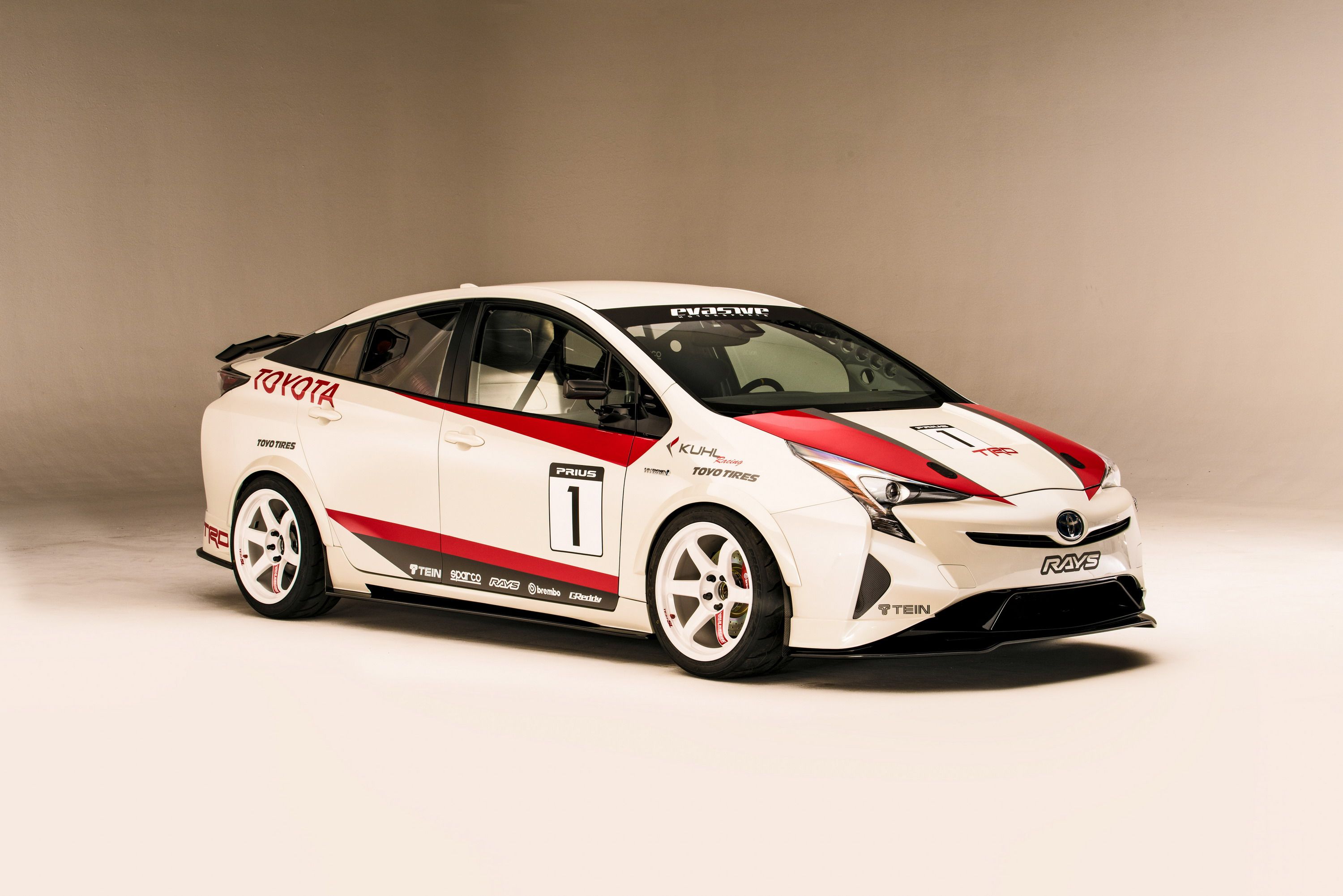
|
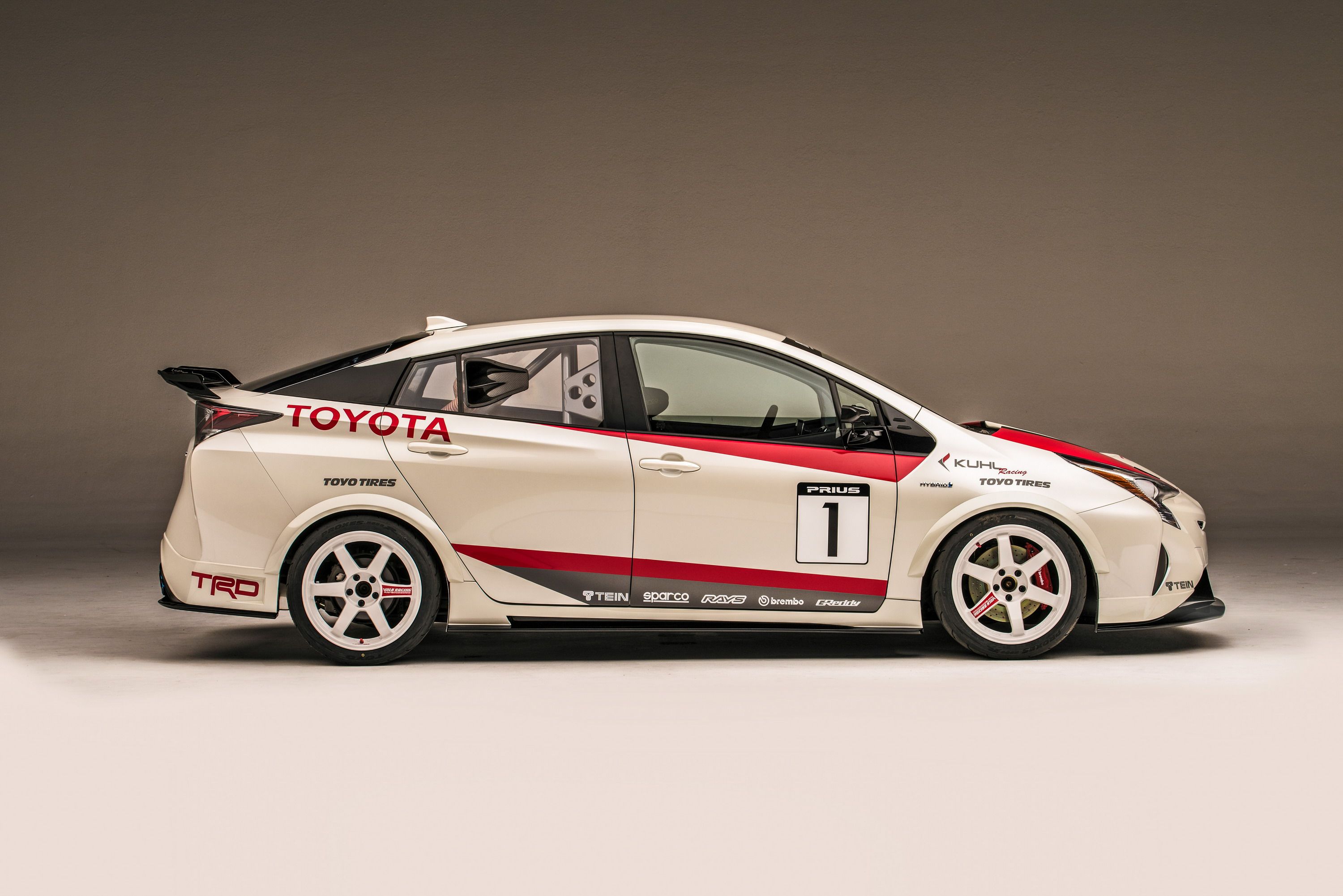
|
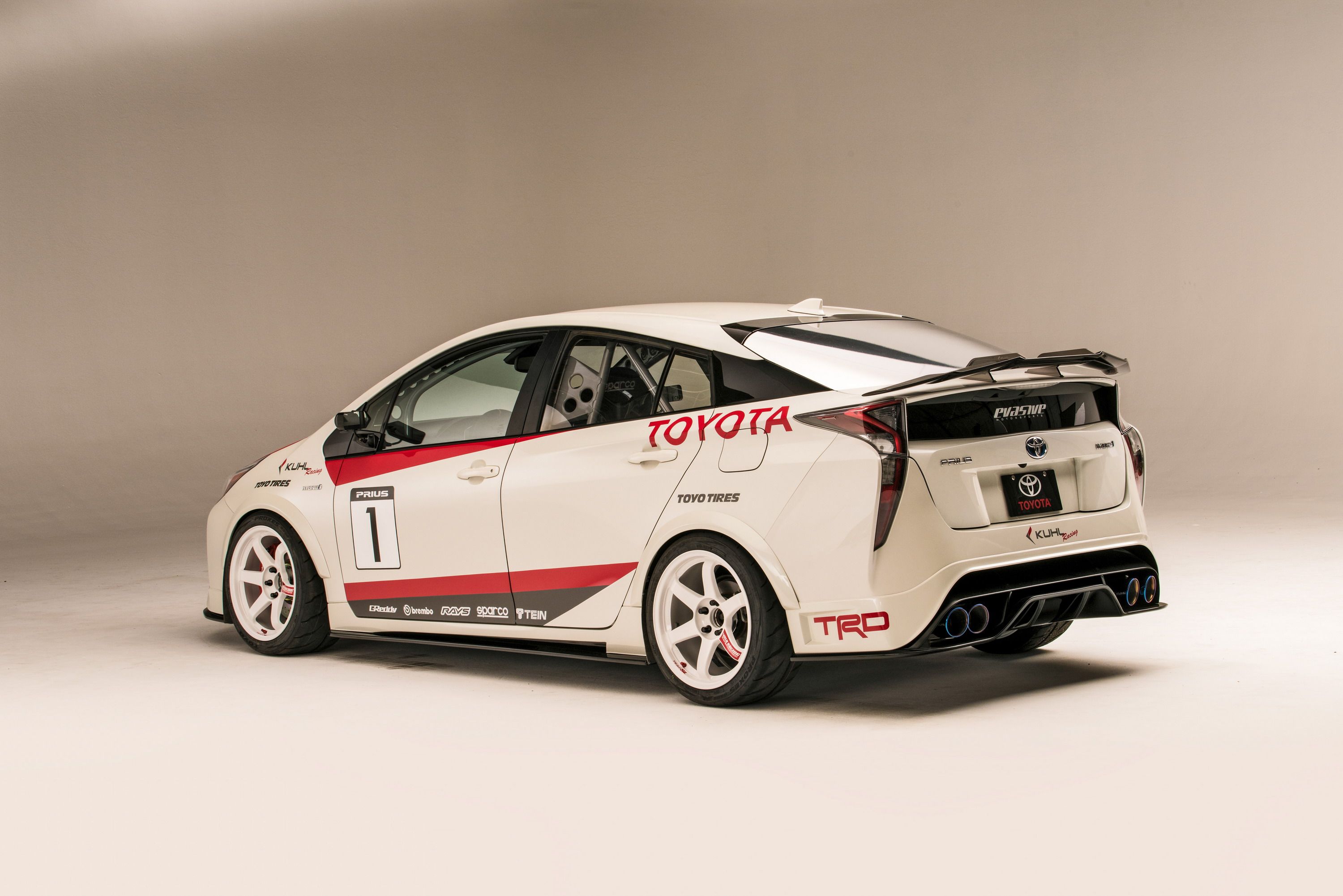
|
Let’s start in front, where we find an updated fascia. The bumper was swapped with a new body component brimming with a black lower section and prominent splitter. The look offsets the white panels, and offers complementary angles that tie it to the lines in the hood.
The large, triangular corner lights were tossed in favor of new black coverings, and the hood receives a red and grey livery that emphasizes the stock lines. There’s also a pair of oval vents located near the inside of the headlights. Switch on the lights, and you’re met with a cool bluish tint.
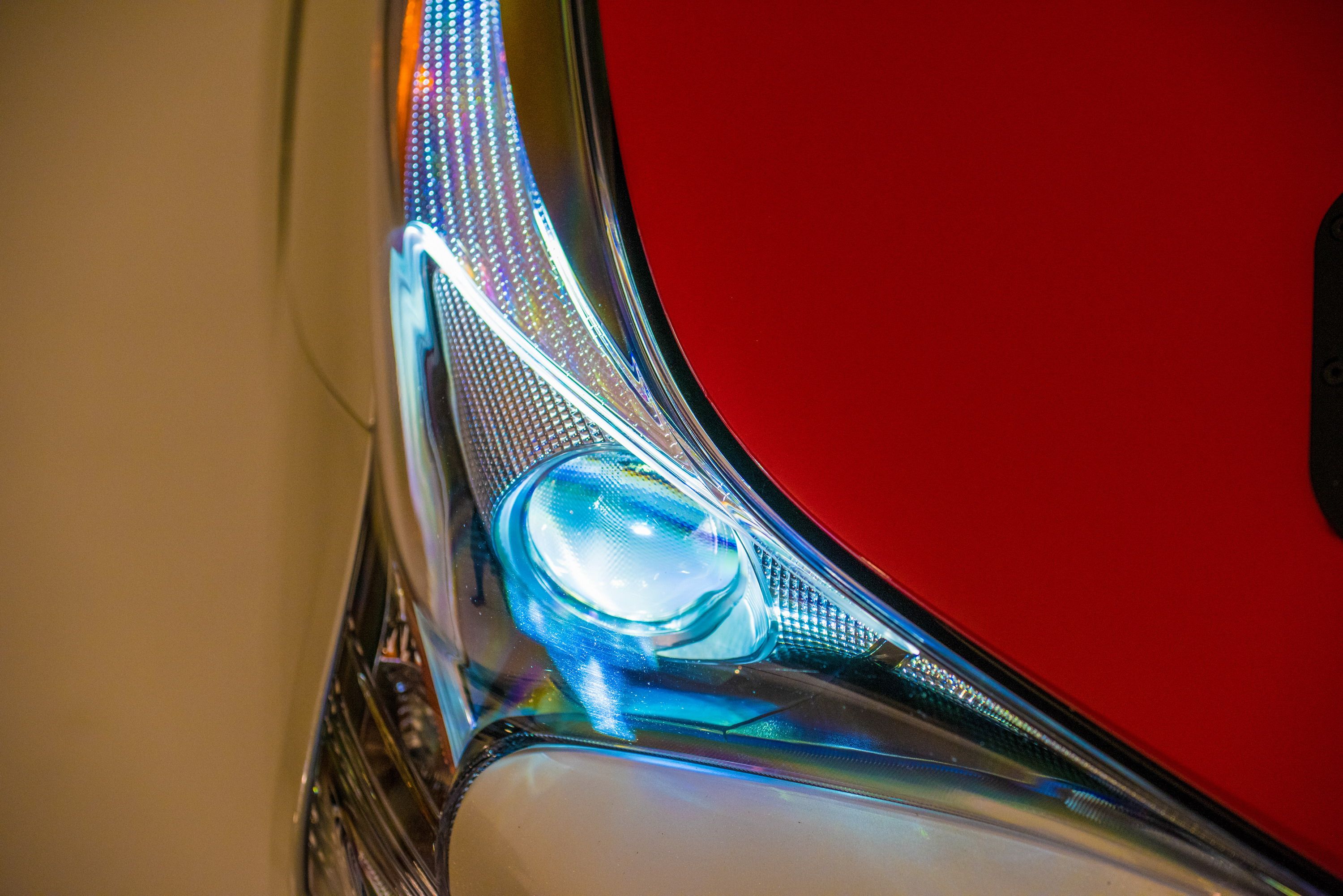
|
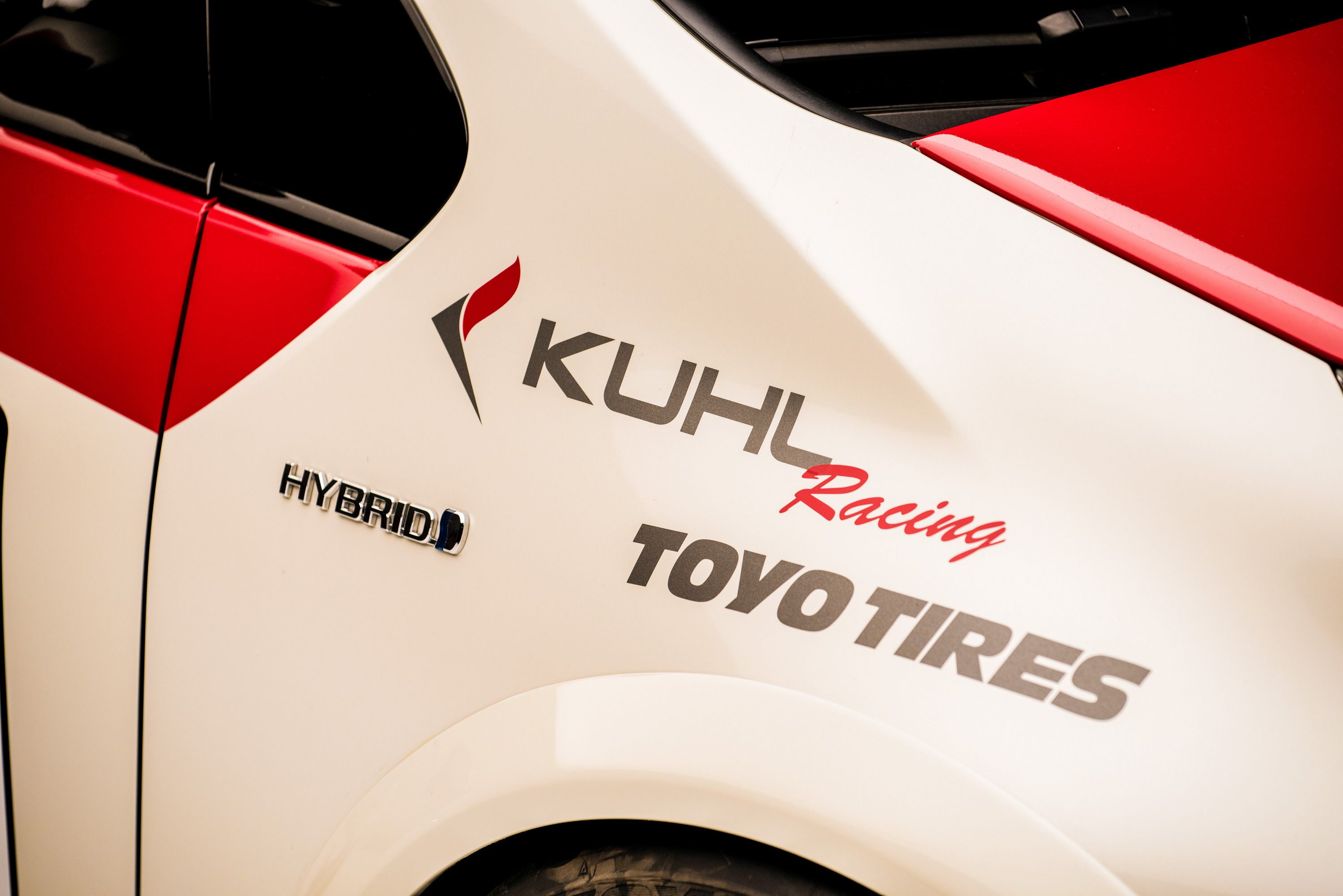
|
On the profile, we find more of the red and grey pointed livery that was started in the nose, which extends towards the tail at an angle that enhances the car’s visual, forward-facing rake. Complementing the livery is a smattering of logos representing the various parts companies the Prius G utilized to make the extra speed. There’s also a prominent number “1” identifier and Prius logo on the door, which would probably be quite a shocker to see flash by on the race track.
Near the ground, there’s a black tray peaking out from the side skirts, suggesting the presence of totally flat underbody. Further details include low-drag side-view mirrors made from carbon fiber, plus large six-spoke wheels under flared-out fenders. The wheels are from Volks, which provided its classic forged TE37 design, finished in white and branded in red.
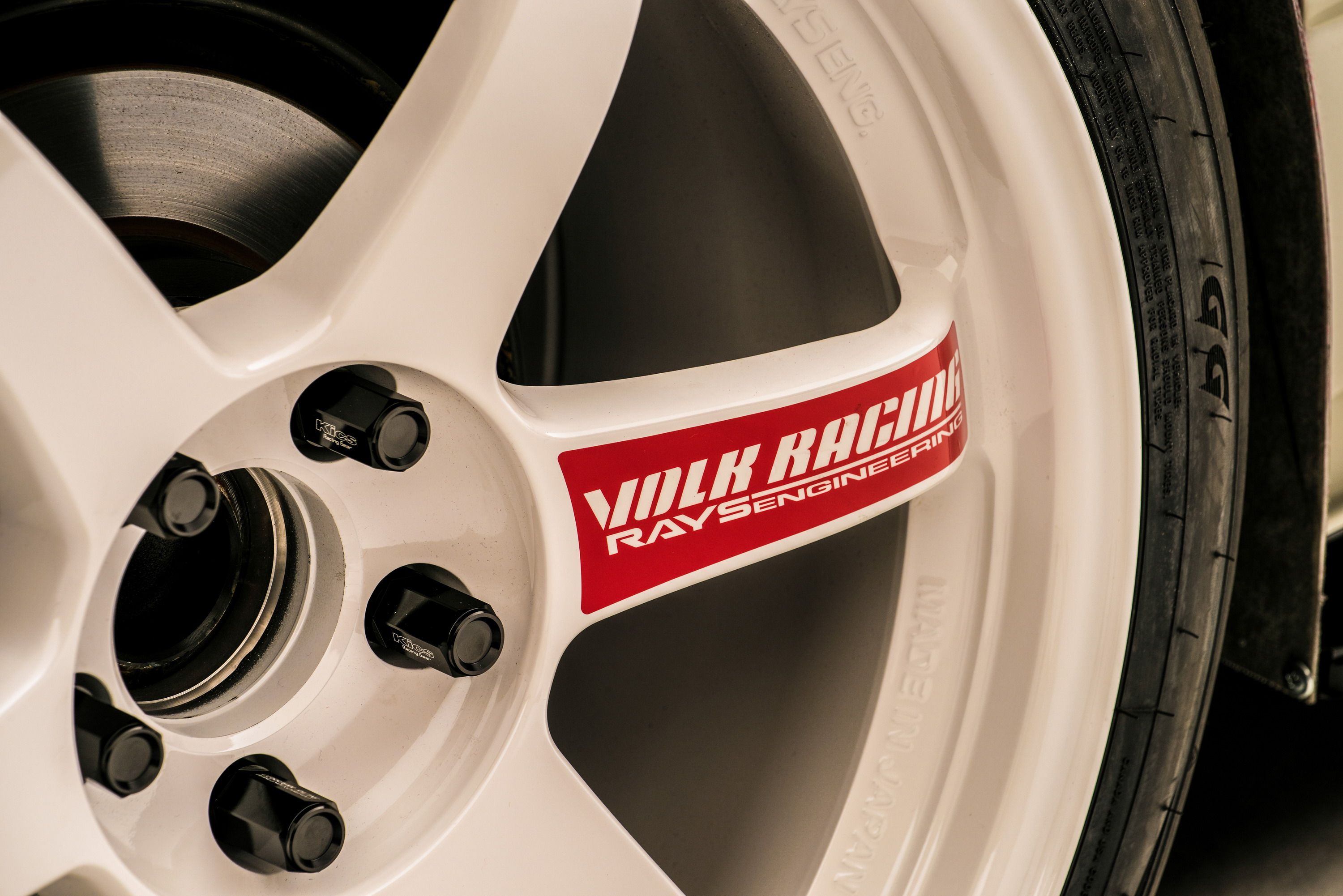
|
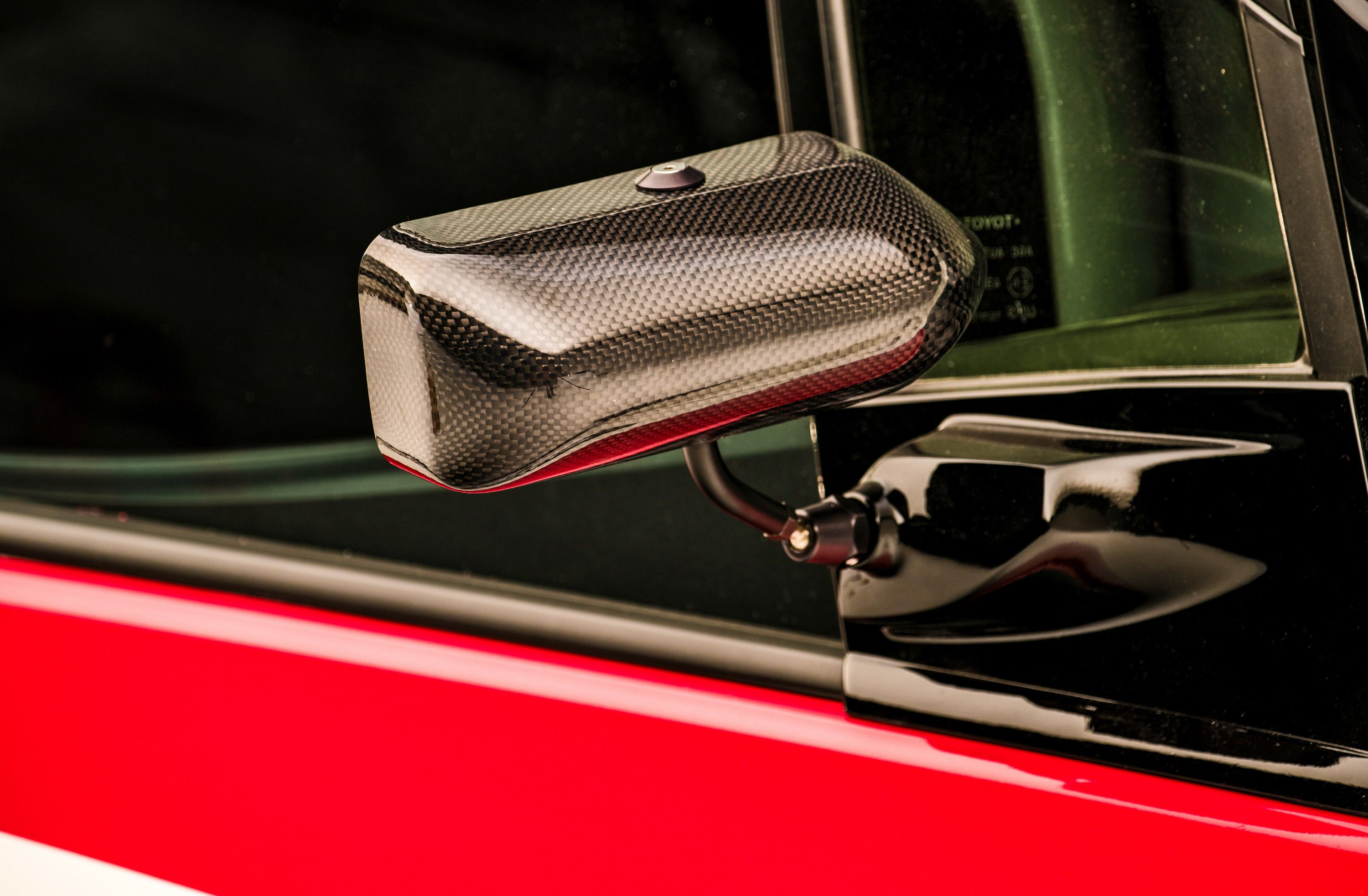
|
Completing the look is a new rear spoiler and rear valence, both of which are finished in black. These pieces are uniquely shaped, and complement the rear end and vertical taillights well.
Toyota didn’t provide any specifics on the body mods or where they came from, but at least reports that Kuhl Racing is responsible for the body kit, Evasive Motorsports did the fender flares, and Craft Square provided its GT-style side-view mirrors.
The 2016 Prius was never particularly great looking, but this new aesthetic is actually working for me. I wouldn’t call it beautiful, but I think with the lowered stance, chunky wheels, and aggressive aero, the whole design actually comes together in impressive fashion. All those sharp cuts and creases look too busy on a street car, but on a racer, they kinda work.
For example, check out the raked appearance from the side view. With the new livery and wheels, it looks aggressive and purposeful, which is a weird thing to write about a Prius, but there you go. I would have liked to see Evasive Motorsports go even further with the flares and really build this thing out, but as is, it still works.
In fact, if you forget it’s a Prius, it actually looks kinda sporty. Well done.
Chassis And Handling
In true race car form, the Prius G is mostly gutted in the cabin. The carpets, seats, and rear bench were all stripped away, revealing bare metal underneath. Interestingly, the build retains the dash and door panels, even including the center console infotainment screen, but my guess is these components would get carbon fiber block outs (similar to what is seen on the central tunnel) if Toyota decided to move forward with the concept.
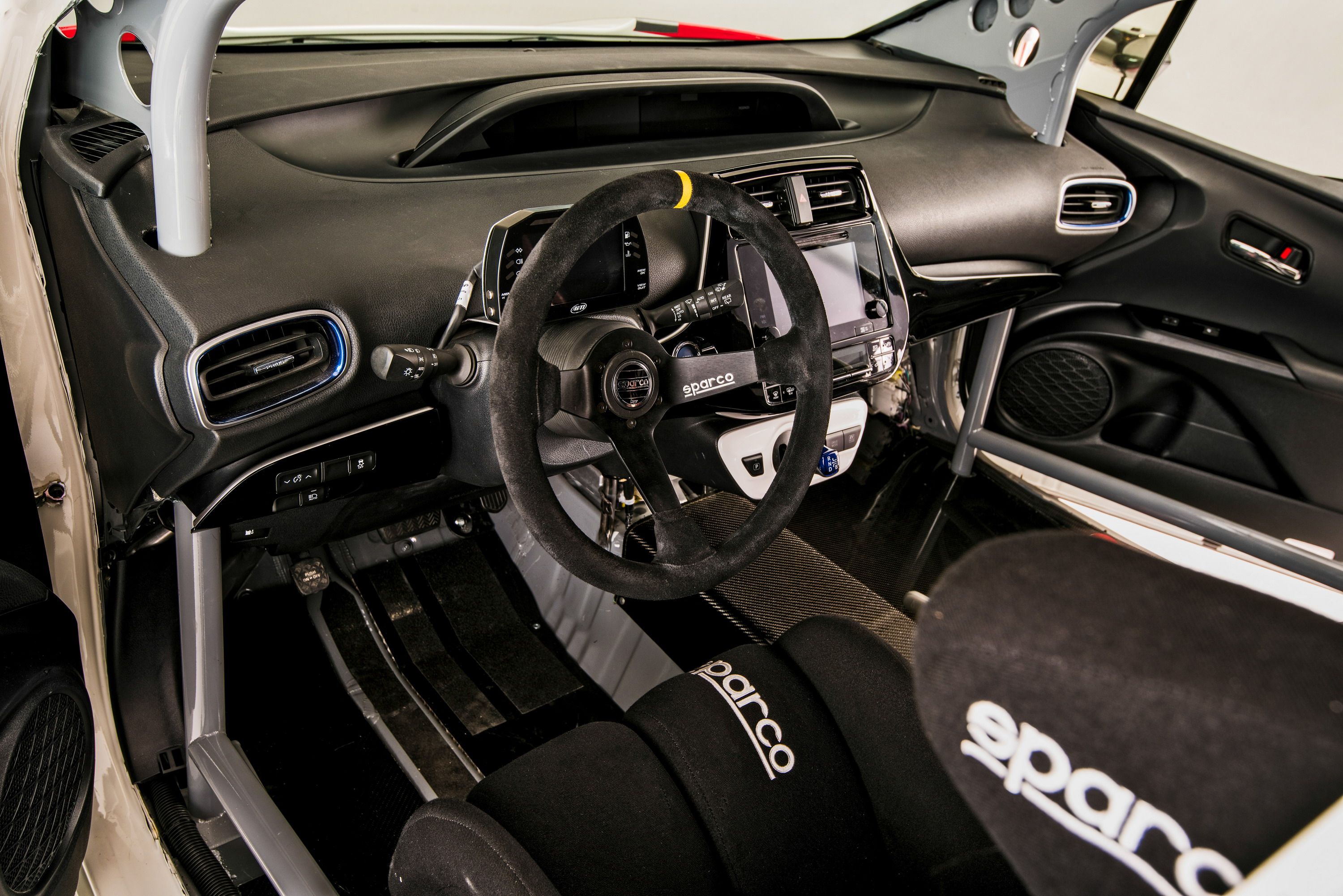
|
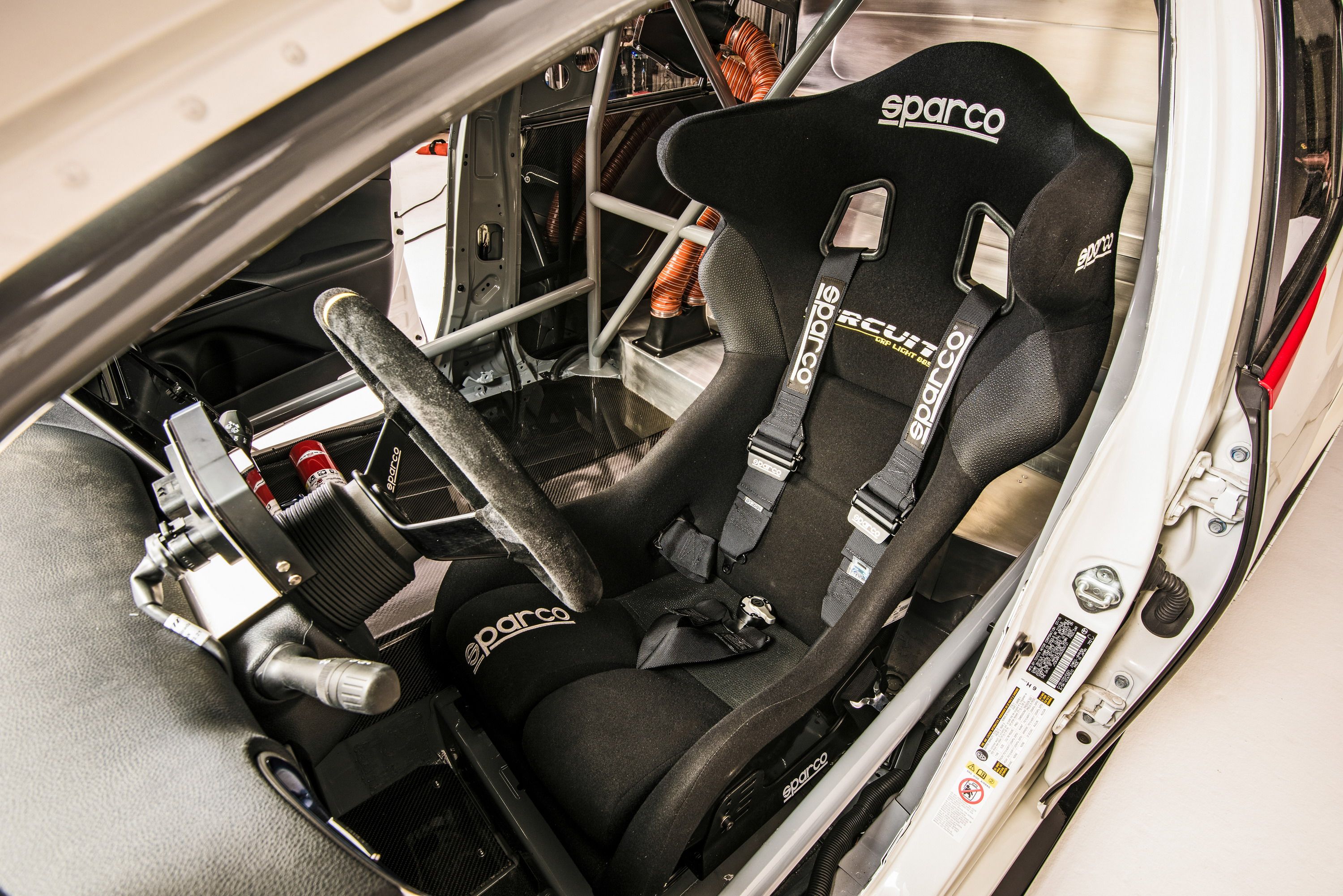
|
Continuing the racer theme is a full roll cage, finished in grey. Pilots sit in a fixed-back racing bucket from Sparco. Sparco also provides a six-point racing harness, plus a three-spoke steering wheel complete with a yellow top marker and what appears to be a quick-release mechanism. Behind the wheel is a digital display to send vital info to the driver.
In the passenger-side well is a fire suppression system. Behind this is a carbon fiber NACA duct mounted inside a Lexan side window, which is used to cool the center-mounted battery pack located behind the driver.
Competition
Unfortunately, just about the only part of this car that remains untouched is the drivetrain. Under the hood, everything appears to be stock as a rock, including the plastic factory manifold cover.
That means a 1.8-liter inline four-cylinder engine hybridized to a mere 121 horsepower is all that motivates the Prius G. There is a new exhaust, as evidenced by the very slick-looking quad exhaust pipes in the back, finished with burnt titanium blue tips, but honestly, I really don’t know how much you can “uncork” a powerplant like this.
It’s even got the stock CVT to rout the power to the front axle, or at least that’s what it looks like given the gear selector in the cabin.
Hmmmm… a race car with only two pedals and 121 horsepower? Unless it’s a super kart we’re talking about, that could be a problem.
Granted, the Prius G is lighter than a standard model, but even so, I would have preferred to see Read the full story [here. 200 horsepower from this thing. Shouldn’t be too hard, though – just add nitrous, right?
Conclusion
Okay, so it’s not really that fast in a straight line. The Prius G makes up for this lack of straight-line aggression by turning some impressive numbers in the corners.
The builders tested the machine out at Willow Springs International Raceway, a popular tuner proving ground situated in Southern California. Out on the SoCal pavement, the Prius G managed to post a lateral acceleration figure of 0.99 G. That’s pretty darn good, and with a little extra tuning, the team behind the build says it’s sure the car will hit that magic 1 g figure.
Thus, you have the name – the Prius G. Clever.
Toyota also boasts that the this concept “out-handled the BMW 528i sedan in independent testing,” which could mean it pulled higher lateral acceleration, or it was just more interesting to drive.
Either way, chalk up the newfound handling chops to what’s going on under the skin. Toyota updated the Prius’ rear suspension for the fourth-gen changeover from a torsion beam, to a modern double wishbone, while also upping torsional rigidity and lowering the center of gravity. You can check out my full review of the 2016 Prius here.
To enhance the extra prowess instilled from the factory, the Prius G gets updated suspension components. According to at least, that includes a full coilover system from Tein, which provides its Street Flex units complemented by an Active EDFC Pro Unit for extra control. Wrapping the lightweight Volk wheels is Toyo’s Proxes R888 tires, a race-only compound. Viewed from the front or rear, these tires look positively meaty on the Prius G, causing a bit of a double take when you realize what you’re seeing.
In front, there are plus-sized Brembo brakes, which suggests that the Prius lost its braking energy recuperation system on its way to performance stardom.
Competition
Hyundai Ioniq Land Speed Record
Okay, so I know the Prius G and Ioniq Speed Record car are coming at this whole hybrid-commuter-turned-racer thing from completely different angles, but hey, you gotta at least give ‘em credit for following through on an idea. Hyundai recently announced it produced a concept Ioniq capable of hitting 160 mph, courtesy of an upgraded engine boosted with nitrous. Now if we could just get the handling of the Prius paired with the power of the Ioniq, we’d really have something (talk about another weird sentence to write).
Read the full story here.
Conclusion
The Prius nameplate has been around for about 20 years now, and as competition in the hybrid segment increases, Toyota will eventually need to expand the line to include new models and trim levels that rope in new buyers.
Clearly, the eco conscious are already hooked, but it would be quite the pivot to try and rope in speed lovers.
Thing is, I think Toyota is testing the waters here. Yes, a new double-wishbone rear suspension and extra torsional rigidity help improve overall ride comfort, but those are also required components for any car looking to make a splash with enthusiasts.
In Japan, the transition from commuter to sporty sedan isn’t exactly complete, but with the Prius GT300 romping around, that transition could be on the way. Powered by a hybrid V-8 and sporting extended aero and a widebody appearance, the GT300 looks like a great way to win over audiences.
Now imagine with me, if you will, a Prius entry in the NASCAR race series. Would it be a laughing stock? Maybe. But I think the laughing would stop as soon as a creation like that started winning races.
Now extend the hybrid technology into other series – for example, a Prius GT car at Le Mans, taking the fight to Ferrari and Ford with astoundingly good mileage, which just so happens to be a highly enviable trait amongst endurance racers.
Ridiculous? Maybe. But hey, I’m not the guy who mounted Toyo Proxes R888 tires on a Prius.

